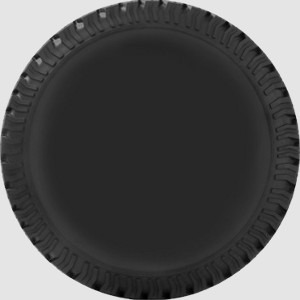
A wider rim makes for a wider tire, but not on a one-for-one ratio. Internal rim width certainly also alters the inflated width of a tire, and manufacturers aren’t consistent in terms of rim width used to measure tires. We’ve seen the latest crop of wide gravel tires grow by 2mm when inflating a tire from 20 psi to 80 psi. Tire pressure obviously plays a role, which is why we do our best to list tire pressure when providing a width measurement of a test tire.

Widths vary from brand to brand: On a 19mm internal width rim, the 40c Rambler is still far short of 40mm. However, as anyone with calipers or attempting to race clinchers in a UCI race is well aware of, the ETRTO is only a guess at best as to how big the tire will inflate up to, and there are several variables that play key roles in tire width. The first number is for width and the second is the diameter. Hidden somewhere on most tires are two imprinted numbers that reveal the intended rim diameter and inflated width.
Compare tire size iso#
Pretty confusing right? If only we had some standards! The ISO / ETRTO measurements attempt to do just that. We’d be all more accurate and would avoid David’s confusion if we dropped the C for tire widths and just used mm. Both labels refer to a rim with a bead seat diameter of 622mm. We’ve lost count of the number of times people have asked us about the difference between 700c and 29er rims and wheels, but to be clear, and to finally answer David’s second question, they’re the same. And for wheel sizes, we’d also be more accurate if we adopted actual bead seat diameters, like 622mm for road, cyclocross, gravel and 29er applications. The new crop of 40mm tires ends up just around 700mm on a 700c rim-exactly what the 622mm diameter was designed for. With a 23mm road tire or narrower, a 700c wheel will measure out to be just 665mm or less in outer diameter.Ĭoincidentally, we’re finally back to an era where many of us are riding 700mm diameter wheels. It’s not like 700mm is some magic number, but it’s interesting that for many decades, we’ve been riding 700c rims on the road with much narrower tires than the rim was originally designed for. Many decades later, some bike companies are now taking that philosophy to the extreme with modern gravel bikes, marketing the option to swap out 700c wheels and tires for 650b wheels and high-volume rubber. Thanks to GT, there was even a brief period when the smaller diameter 700d was a thing. In theory, by paying attention to the rim letter and using an appropriate tire width (and having 2cm of brake pad adjustment), you could swap out wheels and tires between 700a, 700b and 700c, without changing effective gear inches or center of gravity. These larger-diameter rims were intended for narrower tires than the wide rubber historically used on a 700c rim, keeping the same wheel diameter and thus similar ride and standover heights.

Our “normal” 700c rims are just 622mm in diameter, while the largely defunct 700a and 700b sizes were 642 and 635mm in bead seat diameter, respectively. However, the C is not even a unit.Īs the late great Sheldon Brown detailed, the C is simply an old French designation that provides guidance of the width of a tire needed on a certain diameter rim to equate to the intended outer diameter of a tire-in our world-700mm. Relearning Our ABCsįirst of all, what the heck does the C stand for? You’d be forgiven if you thought it was some abbreviation for a metric measurement, since the 700 represents millimeters, and a 40c tire is supposed to equate to a 40mm wide on certain width rims. What do they have all in common? The incorrect use of the letter C. Whether it’s the news about 700x40c tire options, 33c tire width rules, and new 32c widths and treads unveiled, you see it over and over again. WTB’s new 32c Exposure TCS width is more accurately described as a 32mm tire intended for 622mm/700c rims.


 0 kommentar(er)
0 kommentar(er)
